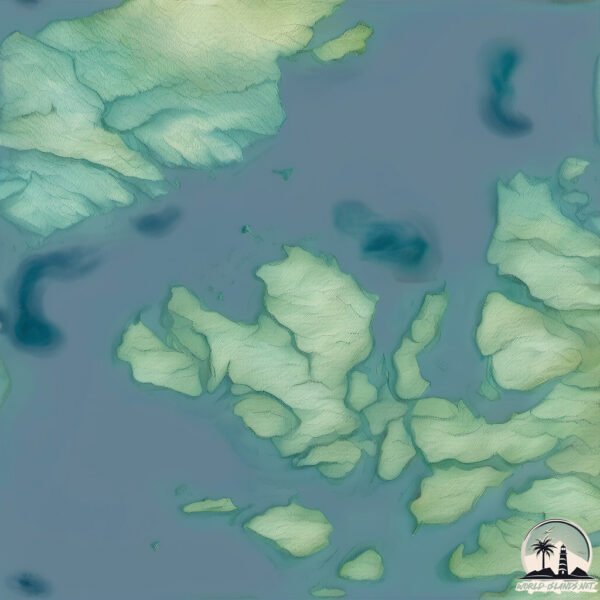Welcome to Scalpay , a Temperate island in the Inner Seas off the West Coast of Scotland, part of the majestic Atlantic Ocean. This guide offers a comprehensive overview of what makes Scalpay unique – from its geography and climate to its population, infrastructure, and beyond. Dive into the details:
Geography and size of Scalpay
Size: 7.869 km²Coastline: 23.9 kmOcean: Atlantic OceanSea: Inner Seas off the West Coast of ScotlandContinent: Europe
Scalpay is a Small Island spanning 7.9 km² with a coastline of 23.9 km.
Archipel: British Isles – A group of islands off the northwest coast of mainland Europe, including Great Britain, Ireland, and over 6,000 smaller islands, known for their rich history and cultural diversity.
Tectonic Plate: Eurasia – One of the world’s largest tectonic plates, the Eurasian Plate covers a significant portion of Europe and Asia. It’s characterized by diverse geological features, including the Ural Mountains, the European Plain, and the Himalayas formed from its collision with the Indian Plate.
The geographic heart of the island is pinpointed at these coordinates:
Climate and weather of Scalpay
Climate Zone: TemperateClimate Details: Temperate Oceanic ClimateTemperature: Warm Summer
Climate Characteristics: Known for its moderate year-round temperatures with ample rainfall and no dry season. Warm summers are characteristic.
Topography and nature of Scalpay
Timezone: UTC±00:00Timezone places: Europe/LondonMax. Elevation: 330 m Mean Elevation: 100 mVegetation: Open WoodlandTree Coverage: 39%
The mean elevation is 100 m. The highest elevation on the island reaches approximately 330 meters above sea level. The island is characterized by Hills: Gently sloping landforms with rounded tops, having a maximum elevation between 200 and 500 meters. Hills contribute to a varied landscape on islands.
Dominating Vegetation: Open Woodland
Vegetation: 9 vegetation zones – Very Highly Diverse Island
Infrastructure and Travelling to Scalpay
Does the island have a public airport? no .
Does the island have a major port? no .
The mean population of Scalpay is 11 per km². Scalpay is Gently Populated. The island belongs to United Kingdom .
The name of the island resonates across different cultures and languages. Here is how it is known around the world: Arabic: بريطانيا العظمى; German: Großbritannien; Spanish: Gran Bretaña; French: Grande-Bretagne; Portuguese: Grã-Bretanha; Russian: Великобритания; Chinese: 大不列顛島
Continuing your journey, Island of Raasay is the next notable island, situated merely km away.
Isle of Scalpay: An underrated island in the Outer Hebrides? | Scotland
Join us on a brief visit to the Isle of Scalpay in the Outer Hebrides. We drove from the Isle of Harris to Scalpay to explore one of ...
Isle of Scalpay: An underrated island in the Outer Hebrides? | Scotland
Join us on a brief visit to the Isle of Scalpay in the Outer Hebrides. ...
Join us on a brief visit to the Isle of Scalpay in the Outer Hebrides. We drove from the Isle of Harris to Scalpay to explore one of ...
Isle of Scalpay - Abandoned House and a Phenomenal Rainbow
Episode 5 from the Isle of Lewis and Harris series sees me begin my ...
Episode 5 from the Isle of Lewis and Harris series sees me begin my exploration of the Isle of Scalpay (a small island connected ...
Isle of Scalpay Outer Hebrides Scotland
Across the bridge to Scalpay and lovely walk to the lighthouse.
Across the bridge to Scalpay and lovely walk to the lighthouse.
United Kingdom is classified as Developed region: G7: Group of Seven – Major advanced economies, including Canada, France, Germany, Italy, Japan, the United Kingdom, and the United States. The level of income is High income: OECD.
News – Latest Updates and Headlines from Scalpay
Stay informed with the most recent news and important headlines from Scalpay. Here’s a roundup of the latest developments.
Loading...
Please note: The data used here has been primarily extracted from satellite readings. Deviations from exact values may occur, particularly regarding the height of elevations and population density. Land area and coastline measurements refer to average values at mean high tide.

